#Mark Gottlieb
Explore tagged Tumblr posts
Text
Dear Mr. Jewell: To the artist, the working of the critical mind is one of life's mysteries. That is why, we suppose, the artist's complaint that he is misunderstood, especially by the critic, has become a noisy commonplace. It is therefore, an event when the worm turns and the critic of the TIMES quietly yet publicly confesses his 'befuddlement,' that he is 'non-plussed' before our pictures at the Federation Show. We salute this honest, we might say cordial reaction towards our 'obscure' paintings, for in other critical quarters we seem to have created a bedlam of hysteria. And we appreciate the gracious opportunity that is being offered us to present our views. We do not intend to defend our pictures. They make their own defense. We consider them clear statements. Your failure to dismiss or disparage them is prima facie evidence that they carry some communicative power. We refuse to defend them not because we cannot. It is an easy matter to explain to the befuddled that 'The Rape of Persephone' is a poetic expression of the essence of the myth; the representation of the concept of seed and its earth with all its brutal implications; the impact of elemental truth. Would you have us present this abstract concept with all its complicated feelings by means of a boy and girl lightly tripping? It is just as easy to explain 'The Syrian Bull' as a new interpretation of an archaic image, involving unprecedented distortions. Since art is timeless, the significant rendition of a symbol, no matter how archaic, has as full validity today as the archaic symbol had then. Or is the one 3,000 years old truer? But these easy program notes can help only the simple minded. No possible set of notes can explain our paintings. Their explanation must come out of a consummated experience between picture and onlooker. The appreciation of art is a true marriage of minds. And in art, as in marriage, lack of consummation is ground for annulment. The point at issue, it seems to us, is not an 'explanation' of the paintings but whether the intrinsic ideas carried within the frames of these pictures have significance. We feel that our pictures demonstrate our aesthetics beliefs, some of which we, therefore, list:
1. To us art is an adventure into an unknown world, which can be explored only by those willing to take the risks.
2. This world of the imagination is fancy-free and violently opposed in common sense.
3. It is our function as artists to make the spectator see the world our way—not his may.
4. We favor the simple expression of the complex thought. We are for the large shape because it has the impact of the unequieocal. We wish to reassert the picture plane. We are for flat forms because they destroy illusion and reveal truth.
5. It is a widely accepted notion among painters that it does not matter what one paints as long as it is well painted. This is the essence of academicism. There is no such thing as good painting about nothing. We assert that the subject is crucial and only that subject matter is valid which is tragic and timeless. That is why we profess spiritual kinship with primitive and archaic art.
Consequently if our work embodies these beliefs, it must insult anyone who is spiritually attuned to interior decoration; pictures for the home' pictures for over the mantel; pictures of the American scene; social pictures; purity in art: prize-winning potboilers; the National Academy: The Whitney Academy; the Corn Belt Academy, buckeyes; trite tripe; etc.
Sincerely yours, Adolph Gottlieb Marcus Rothko 130 Estate Street Brooklyn, Near York
Mark Rothko ֍ Letter to Edward Jewel (1943)
2 notes
·
View notes
Text
It's so interesting to think about this from a different angle! It's true that the number of deaths caused by sharks is lower than those caused by humans on sharks. The great white shark is a great example of a species that can scare us a lot, and it's sadly threatened with extinction. This is a cause for concern for us as individuals, but it doesn't have any wider impact on human numbers.
mod
Steven Allan Spielberg has catapulted the age-old myth of man-eating tremendously into the new age. The sailor yarn that has been told since man went to sea is still alive.




youtube
Guess what? My pop culture object is the home office shark, also known as Jaws!
mod
Oh wow! Isn't it a little weird with the Venus de Milo? But guess what? His first official victim was not a swimming woman!
mods home


#reblog#Steven Allan Spielberg#jaws#roy scheider#richard dreyfuss#robert shaw#lorraine gary#susan backlinie#Jay Mello#murray hamilton#Chris Rebello#peter benchley#Carl Gottlieb#Lee Fierro#Jeffrey Kramer#Jeffrey Voorhees#Craig Kingsbur#jaws 2#donna wilkes#Mark Gruner#Ann Dusenberry#Cindy Grover#galelry mod#1975#wikipedia#Youtube#youtube#pop culture#home office jaws#venus de milo
320 notes
·
View notes
Text
Sharksploitation (2023) Review
Celebrating 100 Shark Weak reviews with shark movie documentary Sharksploitation. #Review
#2023#adam rifkin#andrew traucki#anthony c ferrante#carl gottlieb#chris kentis#christian bogh#christopher ray#david michael latt#david rimawi#david shiffman#david worth#documentary#emily zarka#glenn campbell#gregory stone#james nunn#jim bertges#joe alves#joe dante#johannes roberts#mario van peebles#mark atkins#mark polonia#matt mercer#matty simmons#michael gingold#misty talley#paul bales#peter benchley
0 notes
Text
When people look at abstract art and go "uh I could make that"
Fuck, I wish you would!
I wish you would let this inspire you. I wish that seeing a piece of abstract art would move you to self expression.
I wish you would go to the craft store, buy a cheap canvas and some cheap paint and let yourself play with color and form just to see if you can.
I wish that there were more amateur painters, trying their hand at geometric abstraction and color field painting. That would be so fucking cool.
"I could make that" should be a joyous revelation, not a snarky dismissal.
You could make that? Holy shit. please. Please make that.
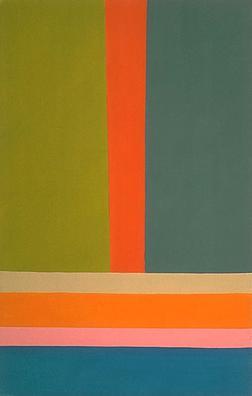
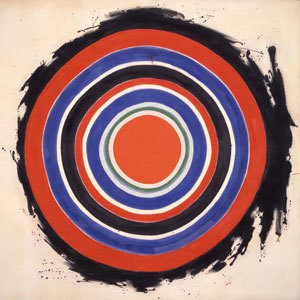
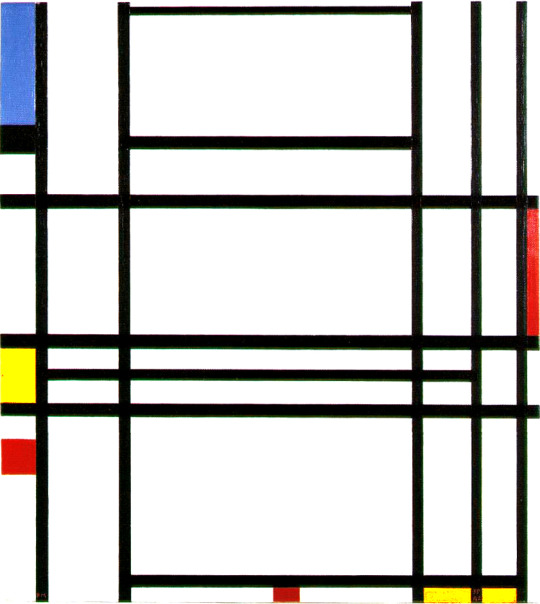
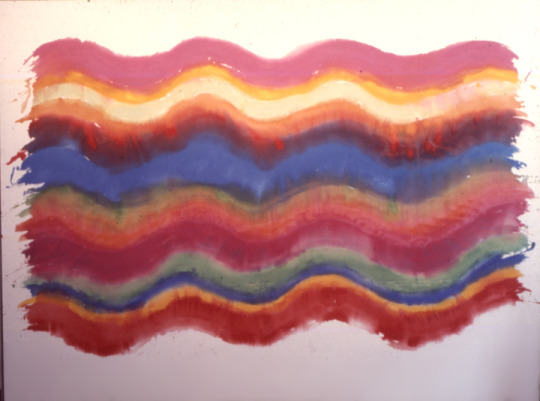
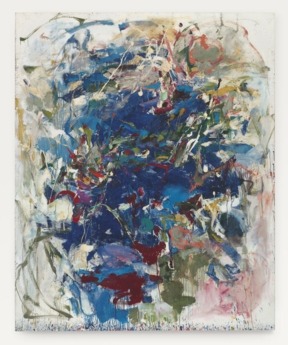
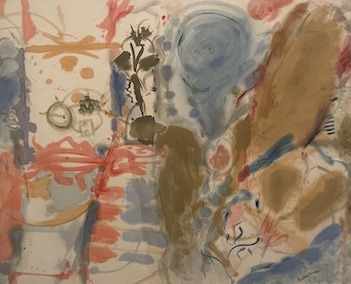
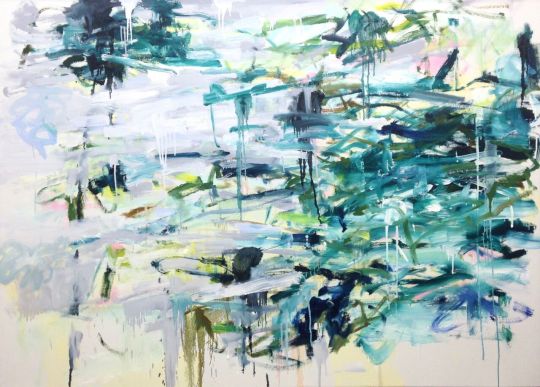
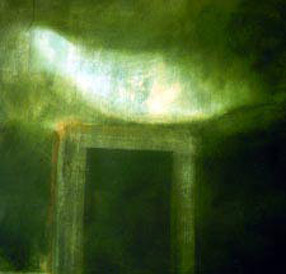
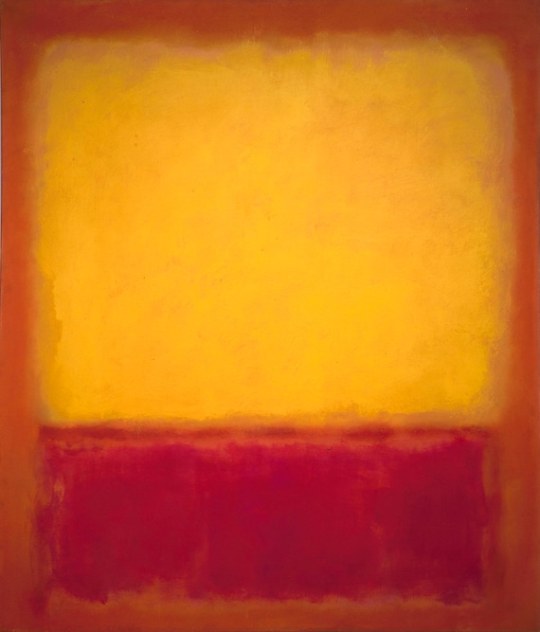
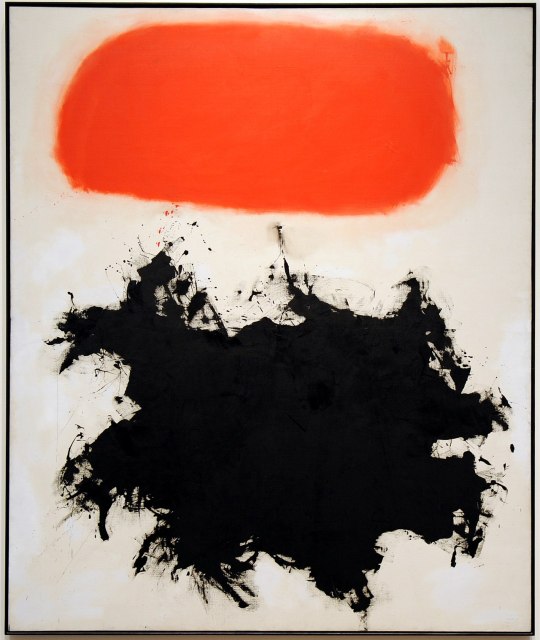
Jack Bush
Kenneth Noland
Piet Mondrain
Pat Lipsky
Joan Mitchell
Helen Frankenthaler
Kikuo Saito
Marilyn Kirsch
Mark Rothko
Adolph Gottlieb
32K notes
·
View notes
Text
"Still Life (Talking)": Pat Metheny's Timeless Sonic Masterpiece
Introduction: Certain albums stand out as true milestones in the history of jazz and instrumental music, creating a lasting impression on the genre and influencing subsequent generations of musicians and fans. “Still Life (Talking),” an album by the Pat Metheny Group, is one such timeless gem. This beautiful work of art, which was released in 1987, displays the virtuosity and ingenuity of…

View On WordPress
#Armando Marçal#Classic Albums#Danny Gottlieb#David Blamires#First Circle#Jazz History#Lyle Mays#Mark Egan#Mark Ledford#Offramp#Pat Metheny#Pat Metheny Group#Paul Wertico#Steve Rodby#Still Life (Talking)
1 note
·
View note
Note
In october of 2012 Mark Gottlieb wrote in an article, that a combination of Magic and Clue couldn't be done, because it was "always Nicol Bolas, with Murder, in Wherever He Damn Well Pleases." Was the entire purpose of War of the Sparks to get Bolas out of the picture, so a Clue crossover could be made? :)
You figured it out. : )
167 notes
·
View notes
Text
Another thing I've determined while comparing Pacific Rim texts - it's highly unlikely Newt and Tendo were ever meant to have attended the Jaeger academy together, as Pacific Rim: Man, Machines, & Monsters has led many people to think.
So, PR:MMM is actually a pretty unreliable text. It's full of typos and gets a number of character names wrong. And PR:MMM is the only text that suggests anything like this. I do strongly emphasize "suggest" here, because it doesn't actually say that they went to the Kodiak Island Jaeger Academy. Instead, each character featured in this book has certain details placed into info boxes, which all use the exact same template, which includes a box titled "RANGER ACADEMY CLASS." The same template makes it sound as if Herc Hansen, the Kaidanovskys, and Hermann Gottlieb all attended the Jaeger academy in 2015. And this strongly suggests that something is very wrong here, because it's extremely unlikely given the timeline.
If we go to the novelization and look at Hermann's dossier, we can find more details on when he joined up. According to the dossier in the novelization (which is based on information provided by Legendary Pictures), Hermann's active service began on May 28, 2015. This is barely a month after Dr. Lightcap and Lieutenant D'Onofrio kicked Karloff's ass in newly-completed prototype Jaeger, Brawler Yukon. The Mark-1s are still in development. It's highly unlikely that the academy even exists at this point. At most, it's under construction. The same dossier also tells us that Hermann wrote code for the Mark-1s, and Beacham seems to agree. So basically, there's no way Hermann could have attended the academy in 2015.
Furthermore, when a Tumblr user asked Travis Beacham whether technicians/mechanics go to Kodiak Island, Beacham answered, It's another program entirely, but the pilot program can feed into it if the cut candidates elect to pursue that track.
So, it appears that the data in the RANGER ACADEMY CLASS boxes actually list when characters joined the Pan-Pacific Defense Corps. In the case of the Beckets, they actually did start by entering the academy. But unless Newt and Tendo had some harebrained scheme to become rangers and washed out partway through (which, to be clear, could make an epically funny comedy story), it's unlikely they were ever originally intended to have gone to the Kodiak Island Jaeger Academy.
38 notes
·
View notes
Text
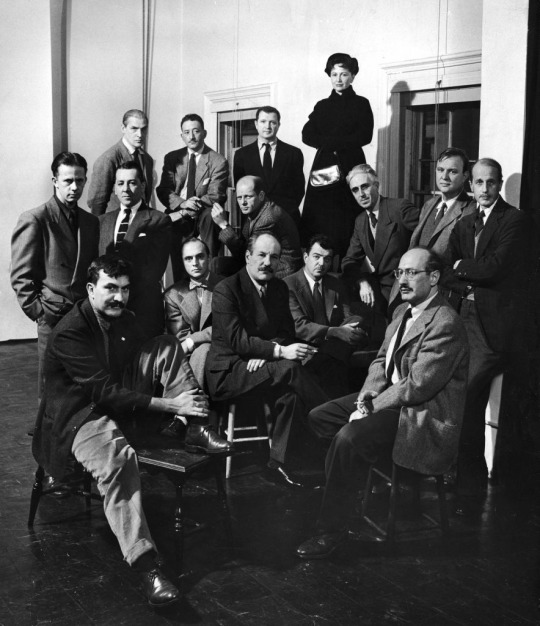
"The Irascibles" The group of artists that led the 1951 fight against the exclusion of abstract expressionism from a New York show included, from left, rear: Willem de Kooning, Adolph Gottlieb, Ad Reinhardt,
Hedda Sterne; (next row) @abwwia
Richard Pousette-Dart, William Baziotes, Jimmy Ernst (with bow tie), Jackson Pollock (in striped jacket), James Brooks, Clyfford Still (leaning on knee), Robert Motherwell, Bradley Walker Tomlin; (in foreground) Theordoros Stamos (on bench), Barnett Newman (on stool), Mark Rothko (with glasses).”
Nina Leen/Life Pictures/Shutterstock | source
Nina Leen (born 1914, died January 1, 1995) was an American photographer born in the Russian Empire. She was a constant contributor to Life. She is remembered above all for her photographs of animals, many published in book form, as well as her portraits. Via Wikipedia
Hedda Sterne (August 4, 1910 – April 8, 2011) was a Romanian-born American artist who was an active member of the New York School of painters. Her work is often associated with Abstract Expressionism and Surrealism. She was also the only woman to appear in the famous photograph of abstract expressionist artists dubbed "The Irascibles", although the group included other women.
Hedda Sterne in her studio source


Hedda Sterne, 1947, photograph by Margaret Bourke-White
Margaret Bourke-White (/ˈbɜːrk/; June 14, 1904 – August 27, 1971) was an American photographer and documentary photographer. She was arguably best known as the first foreign photographer permitted to take pictures of Soviet industry under the Soviets' first five-year plan, as the first American female war photojournalist, and for taking the photograph (of the construction of Fort Peck Dam) that became the cover of the first issue of Life magazine. Via Wikipedia
25 notes
·
View notes
Text

Happy 70th Birthday of the jazz guitar virtuoso Pat Metheny!
Pat Metheny – Works
Lyle Mays – keyboards Mark Egan – bass Dan Gottlieb – drums Pat Metheny – guitars, electric bass Steve Rodby – bass Nana Vasconcelos – percussion, vocals Charlie Haden – bass Jack DeJohnette – drums Mike Brecker – tenor saxophone
10 notes
·
View notes
Text
Not me idly wondering what are the jaegers made of, checking out the wiki and once again going mad with crumbs:
a) I reject Mark 1s being made out of iron bc that's just. Not a thing. This sentiment started the mess below.
b) Gottlieb's dad started The Jaeger Program! Tony Stark had a dad! It's all according to plan.
c) The PR lore is insane and I love it.
"I reject that thesis and raise you this," Stark spins his chair around to point his pen at Amadeus's face. "My suits are just that good."
Amadeus raises an eyebrow. "All the seals melted," he says. "We had to cut Robbie out of it. He should've cooked, even if the flame retardant held up. You know there's more to it, and if you backed me up--"
"Oh, there sure is more to it. More body horror I want nowhere near my lab." Stark shudders. "Let's just be glad he made it and leave it at that, huh?"
It takes every ounce of Amadeus's professionalism not to say 'nuh-huh'. He's already laid out his theory. As tempting as it is to go around in circles until he wears Stark down, they have other work to do. It's just--it's so bloody frustrating! He joined the jaeger program specifically to study demon biology and its influence to exposed humans, and he's been stuck mid-maxing the rangers' reaction times like some run of the mill engineer.
He's seen what happens to people who trade in demon remains without protective equipment. The initial increase in strength and agility gives way to organ failure as soon as the corruption reaches the bloodstream. The longest documented survival rate was less than seventy-two hours from exposure and judging by the case footage still replaying occasionally in Amadeus's nightmares, the poor woman wasn't holding scholarly conversations in the last twenty-four.
Now, the exposure must be physical - drifting with the lesser categories haven't shown to cause the same rapid tissue degradation. The beastie riders down in the Bone Slums reported occasional headaches and weird dreams, but it's impossible to verify without independent study, and, well. Then there's Robbie.
Robbie has never drifted, period, before the accident with The Charger. His sudden physical improvements could be easily explained away by access to regular meals and a brutal training regime, and he passed medical before even approaching a jaeger. There is nothing about him - nothing that Amadeus has found so far, at least - that differs from any of the other rangers, other than, oh, being able to drift solo with the most haunted piece of technology ever allowed into military use. And now, apparently, withstanding an over twelve hundred degrees Celcius firestorm.
The media nicknamed the demon Inferno - there wasn't time for anything more creative. The whole Cam Ranh Bay turned to glass, eleven thousand dead, two whole jaegers reduced to slag. The only reason there is any Vietnam left to mourn the losses is still cooling in the sea outside the Shatterdome. The Charger isn't made of anything special, it's the same steel alloys as all the other Mark-2s. When Inferno threw up it's fiery guts all over it, Amadeus started mentally composing a way to break the news to Gabe - like hell he was going to let Ivanov field that one - and he's still not entirely convinced he hasn't hit his head and imagined the way the black jaeger's chains flew out of the fire to wrap around the demon's neck.
It's still black, although no longer from paint. The techs are already busy scrubbing it down and replacing the fried electronics, because at least something got damaged to prove Robbie didn't just teleport his mech in and out of the battle. At this point, there is no discounting any possible scenario. Maybe if he ran a Pons simulation with the Icebox protocol...
Stark sighs. "Kid, let me give you some sage advice," he says. His tone is suddenly very serious - enough to get Amadeus's attention. "Do you know what the military does with weird shit they can't explain?"
"What are you--?"
"One of two things," Stark slaps a finger to his open palm. "Either they pretend everything is hunky-dory as long as the weird shit does what they want, or," he adds a second finger, "someone complains about the weird shit enough that they lock it up, out of sight. So they can speed-run their tests. Are you picking up? What I'm putting down, here?"
Amadeus swallows past the lump in his throat. "You own the Jaeger Program."
Stark rolls his eyes. "You're confusing me with my father again. Keep up." His expression softens somewhat. "Look, I don't like it either."
"Save it," Amadeus pulls on his coat. "I'm going out."
"Cho, don't be--"
"See you at the debrief."
16 notes
·
View notes
Note
PLEASE TELL ME ABOUT THE PACIFIC RIM FIC!
EHEHEHE I'M SO GLAD YOU ASKED!!
i have... such a strange little relationship with this wip. it's literally a complete 40k draft that i abandoned after the first round of edits, then returned to to edit a bit more after a year or so, then returned to AGAIN to poke at after another year or two... literally i have always planned to post it eventually, i don't know what keeps Happening!! (actually, i'm looking back at it now and most of the sidebar comments i have marked just say shit like "hmmm" or "fix this" with ZERO specification of what to do differently so. probably That keeps happening.)
anyway, the process of writing this fic was primarily an exercise in split pov, distinguishing narrative voices, and intertwining storylines for different characters! it was a lot of fun, i have never written anything else quite like it. the premise is that newt, hermann, raleigh, mako, and tendo all meet in an airport when their flights are delayed, and thus newt/hermann and mako/raleigh romances are born. plus tendo is there ❤️ it features some truly impressive run-on sentences from newt's pov, five bilinguals who have varying degrees of beef with each other's accents, and my darling dear underhyped fave, caitlin lightcap (in small doses). here, have a teaser:
“What held you up out there? Dr. Gottlieb finally hit you with that cane? He was lookin’ like he wanted to all night.” “Hit me? No way,” Newt scoffs. “Try hit on me. The dude loves me. I mean, that’s understandable, I’ve pretty much reached the maximum level of awesomeness that you can pack into one human, but no, dude, trust me, beneath all that prickly pseudo-British exterior?” Newt wiggles his eyebrows. “He’s into it. Totally.” Tendo studies him. “You ever take an intro psych class, Newt?” “‘Course I did, I got a degree in neuro, dude.” That class had been kind of weird, given that half the time they were discussing things which Newt had been diagnosed with, but still interesting. As for its relevance to this conversation— “Then you should know when I’m talking about when I say: that, my friend, is called projection.” Tendo’s a quick son of a bitch, Newt has to give him that. “Whatever,” Newt says airily. “It’ll be true one day. I can make that happen. Just you wait.” “In your dreams, Geiszler.” Newt pulls his laptop out of his backpack. He can’t use it until they reach cruising altitude, because stupid arbitrary rules are stupid, but he’s got homework to do if he wants to prove Tendo wrong. And he intends to do it. Fifty minutes later, he’s reading through a research paper by Dr. Hermann Gottlieb, and my, my, my. This is some well-written shit. Newt disagrees with half of it. This is going to be so much fun.
god, i do still love this fic huh. maybe it's about time for that every-few-years round of edits... maybe this time i could ACTUALLY post it???
#blue skies i LOVE YOUUU....#it's 1/3 heartfelt reflections on moments in these characters lives 1/3 wacky coincidences that bring them together and 1/3 Insane Banter#i'm glad to know it'll have an audience if i ever get it out there! i feel like pacrim stuff gets so little love these days :')#and ty for the ask!!!#answered#n.txt
7 notes
·
View notes
Text

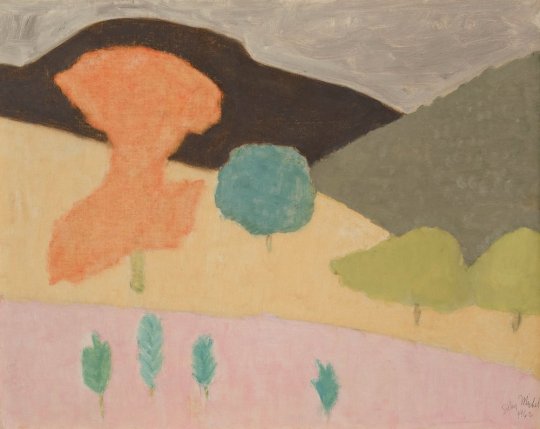
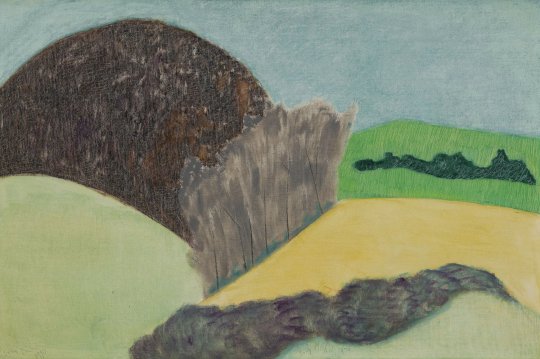
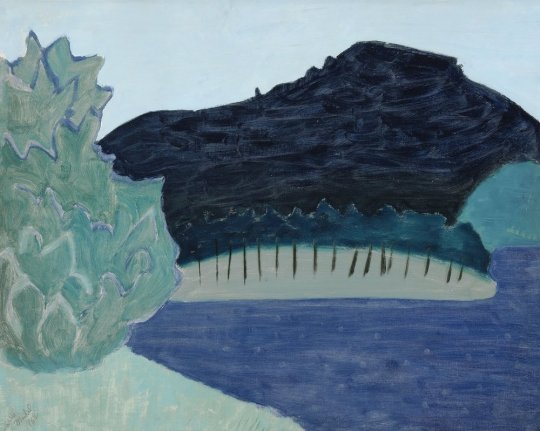

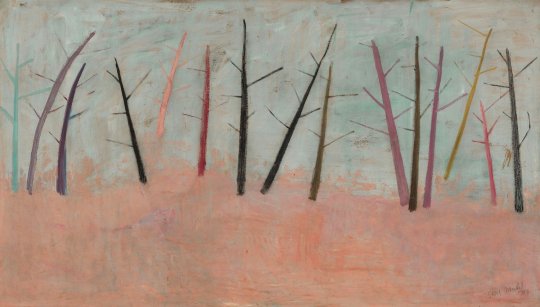

Sally Michel’s story cannot be told without bringing in her life partner, Milton Avery.
Milton Avery (1885-1965) and Sally Michel (1902-2003) met painting in Gloucester, Massachusetts in 1924. They admired each other’s dedication to sketching all day. Married in 1926, Sally and Milton worked in New York as a unit until Milton’s death in 1965. To provide support, Sally worked as a freelance illustrator, an occupation she could pursue at home. This allowed her to remain by the side of Milton and their young daughter, while continuing to develop her own painting. The couple would rise at six in the morning and draw or paint straight through to dinner. Sally was gregarious and Milton was taciturn, so she became his spokesman. Every Saturday they went to New York’s galleries and museums. They continued to sketch from a model at the Art Students League and later with a group of their artist-friends, at each other’s studios. Through the 1930s, fellow artists of Sally’s generation, including Mark Rothko, Adolph Gottlieb, and Barnett Newman frequently came to the Avery home to discuss art. By the mid-1940s Milton and Sally had each developed their own parallel but unique approaches to painting.
The refinement of their artistic visions evolved over many years of sketching, painting, looking, and sharing ideas on art. The Averys structured their year so that summers could be shared creating together and later with their artist-daughter March (b. 1932). Because rental apartments in New York were plentiful, Milton and Sally were able to leave the City each summer and return in the fall. They sketched non-stop on their trips, gathering source material for future paintings to be executed in the studio. A list of the summer trips gives some indication of which location inspired a painting’s subject. With limited funds in the 1930s, the Averys drove to summer locations in Connecticut (1930), Gloucester, Massachusetts (1926-1933), Vermont (1937, 1939, 1940), and the Gaspé Peninsula, Québec (1938).
Sally Michel did paint directly from nature throughout her career, but developed most of her artwork from sketches. She often created an intermediary watercolor or gouache that then informed the finished oil, transmitting a mood, time of day, weather, or season. The fluidity and luminosity of gouache and watercolor provided freedom to experiment with color and tone, which could be duplicated on canvas by painting with thinned pigments. To create an overall textural softness, Sally used a stiff brush to apply matte pigments in thin layers. If a pigment became too thick it could be scraped from the canvas to reveal lower coats of pigment and achieve the desired tone. In looking over a group of sketches to select one to paint, Sally considered contrasts between straight and curving lines, discrepancies in scale, and different views of a single scene. Sally’s portraits of individuals were often close-ups isolated against flat backgrounds. Scale distortion, exaggerated color, or caricature could provide social commentary when she desired it. This sketch-to-painting approach allowed Sally to achieve simplified and abstracted shapes locked together into finely balanced compositions.
Milton and Sally Michel Avery were artists dedicated to painting what they saw at a time of uncertainty for realism in American art. From 1946 to 1958 Abstract Expressionism, a gestural or action painting style with roots in European Surrealism, was at its height of popularity. Abstract Expressionists considered any reference to recognizable imagery to be parochial, out of date, and taboo. The Averys saw that bridges between realism and abstraction can go both ways and color, structure, and light are the common denominators. This realization led to recognizing that shapes, spaces, and color form a set of unique relationships independent of any subject matter. The Averys modernized realism by using the shapes of things, the spaces around them, and color in new ways. They treated color less naturalistically to reflect mood and transcend the factual aspects of realistic subjects.
Realism traditionally relies on light and dark contrasts to create depth. They found the use of non-naturalistic color suppressed that contrast and led to a new challenge of how else to produce depth. The solution they found was that a highly structured composition would still be read as a landscape, still life, or figure. To capture further universality and interconnections in their paintings, the Averys worked with shapes and their edges. They used thinly applied paint so the canvas ground was revealed around the edges of shapes, making the bare canvas function as color. The boundaries of soft shapes could be achieved through intricate color transitions, creating contiguous forms that blend into one another. This approach led to a new and important discovery that the distinctions between objects in a painting are fundamentally illusions and that the borders between shapes are what create representational art.
The Averys also found that reducing the number of shapes and colors in a painting and eliminating illusionistic rounded volumes and modeled forms added modernity to a scene. Shape and color could become equal when shapes were used as containers of color and that areas of color could be stacked as abstract signs of foreground, middle ground, distance, and sky. The Averys used patterns, organic or geometric, to express the forces as well as the forms of nature. Liquid or transparent areas of paint could embody the forces of wind and water. This demonstrated that painterly surfaces associated with the Abstract Expressionists could be used in realism to express more than angst.
In March of 1964 Milton’s health put him in a New York hospital where he died in January of 1965. Sally worked tirelessly to ensure Milton’s legacy while also continuing to paint and evolve the way she used materials for another twenty-five years. To achieve a dry paint surface with a soft matte feel, she mixed large amounts of turpentine with her paint rather than linseed oil. Always frugal with pigment, Sally used rags to moderate layers of color in a shape, and added luminosity by tinting colors with white pigment. Her experimentation with color harmonies was often daring. When she wanted textural interest or to bring attention to the two-dimensional surface of a canvas, she scratched into the paint. In the figures, animals, still lifes, and landscapes she painted, Sally worked to achieve mood and movement rather than detailed representation. She continued to find her imagery in the visible world, often inspired by her own travels abroad. To present it in a modern way took careful consideration and skill in her non-associative color choices for mood, selection and placement of realistic shapes, and attention to the edges of her reductive forms to achieve flattened compositions. In her art, Sally Michel understood and adapted elements from the two streams of representation and abstraction to refresh realism, keeping it relevant after Abstract Expressionism.
Essay by Deedee Wigmore
12 notes
·
View notes
Text

VERNE TOSSEY
You've Bet Your Life, book cover, 1957
Verne Tossey was born in 1920 and grew up during the 1950s and was influenced by the artistic atmosphere of the time. Abstract Expressionism, a form of painting that explored notions of spirituality and the sublime, dominated the 1950s. A number of artists concentrated on the formal properties of painting, and action painting was influenced by the political freedom of the United States, in opposition to the strict limitations of the Soviet bloc. New York City became the focus for modernism on an international scale during the Post-War period. Many artists had travelled to the city during the Second World War, fleeing in exile from Europe. This led to a substantial pooling of talent and ideas. Influential Europeans such as Piet Mondrian, Josef Albers and Hans Hoffmann provided inspiration for American artists whilst in New York and influenced cultural growth in the United States for many decades to come. Jackson Pollock, Willem de Kooning, Mark Rothko, Frank Kline, Barnett Newman, Clyfford Still and Adolph Gottlieb were predominant artists of this period. The male dominated environment has been subsequently revised to recognize the contributions of female artists such as Lee Krasner, Joan Mitchell, and Louise Bourgeois, amongst others.
2 notes
·
View notes
Note
I decided to do a bit of data analysis on the list in today's article. According to it, Magic has had 229 different designers in its lifetime, of which 130 have only done so during one of the stages. On the other end of the scale, only 10 have worked as a designer for four or more stages (Doug Beyer, Erik Lauer, Ken Nagle, Mark Gottlieb and Mike Turian for four each, Aaron Forsythe and Bill Rose for five each, Richard Garfield for six, and you for all seven).
FYI.
Thanks for collect the data.
46 notes
·
View notes
Text
Finding more interesting things while going through Alex Irvine's novelization of Pacific Rim: Uprising.
We learn about the Severnaya manufacturing facility, which had produced power cores for Mark-1 and Mark-2 Jaegers. Page 95 informs us that it was constructed in 2019 and decommissioned in 2022. Page 95 also claims that it was shut down because:
Remoteness of location offered protection from Kaiju attacks but caused difficulties in shipping. Personnel suffered from low morale and resultant low productivity as a result of isolation. Shipments were vulnerable to theft due to multiple transfer points en route to Shatterdome locations. Errors in siting survey resulted in nearby glaciers causing shifts in subterranean areas of the manufacturing floor.
But page 96 informs us:
The PPDC had built a number of factories in places like this, far from the Pacific Ocean and therefore less likely to be lost in Kaiju attacks. But this one had been mothballed during the war, according to the records Gottlieb had retrieved. Newer power core technologies pioneered in China and Washington state had relocated much of the manufacturing to those places, and the Severnaya facility had been completely abandoned for more than a decade.
Now, if we know anything from the original Pacific Rim novelization, it's that Legendary provided Alex Irvine with no small amount of outdated or incorrect information. So to see a discrepancy like this in Uprising's novelization isn't really surprising.
Now, if you know your Pacific Rim chronology, you might recall that the last nuclear generation of Jaegers deployed in 2017, two years before this facility was supposedly even built. This makes the 2019-2022 dates quite strange.
However - Guillermo del Toro stated that Pacific Rim 2 was initially meant to be set "a few years" after the first movie. (Source.) So if we ballpark a date of 2028 and subtract approximately ten years, that gives us a decommissioning date somewhere closer to 2018 - in other words, exactly when we would expect a facility like this to be shut down.
Was this, perhaps, part of the story before SDK took over?
5 notes
·
View notes
Text




Caravan (Owl Painting), 84 in. x 84 in., Oil on canvas. 2012. National Museum of Wildlife Art Permanent Collection (Jackson, WY). Purchased with funds generously donated by Adrienne & John Mars. Artwork & images ©Peter D. Gerakaris. All Rights Reserved. TRAVELING EXHIBIT: UN/NATURAL SELECTIONS: WILDLIFE IN CONTEMPORARY ART
Installation Views & Museum Preview at The Huson River Museum (Yonkers, NY)
OCTOBER 13, 2023 – JANUARY 14, 2024
From Julie Buffalohead and Kiki Smith to Walton Ford and James Prosek, the artists in this exhibition represent another stage in the evolution of animal art. Wild animals have been present in art since the first artists painted images on cave walls or carved figures in stone tens of thousands of years ago. Today’s artists continue to use animal imagery as away to address humanity’s interconnectedness with the natural world. Un/Natural Selections: Wildlife in Contemporary Art, organized by the National Museum of Wildlife Art, explores the meaning of these creative expressions within the context of contemporary art. Featuring a diverse group of more than forty artworks from the National Museum of Wildlife Art’s permanent collection, the exhibition offers a wide range of styles in a variety of media, divided into four thematic sections: Tradition, Politics,Science, and Aesthetics. These realms act as overlapping chapters, investigating the ways we use animal imagery to tackle human concerns and responsibilities. The title of this exhibition is a play on Charles Darwin’s concept of natural selection from his pivotal writing, On the Origin of Species (1859). Darwin’s ideas contributed much to the development of wildlife art in the late nineteenth century, as artists began to represent animals in natural habitats, enacting natural behaviors. From Julie Buffalohead and Kiki Smith to Walton Ford and James Prosek, the artists in this exhibition represent another stage in the evolution of animal art: choosing to represent animals in alternative, unnatural spaces—spaces more often directly linked to civilization than to wilderness. LEARN MORE
FEATURED ARTISTS Troy Abbott • Timothy Berg and Rebekah Myers • George Boorujy • John Buck • Julie Buffalohead • Mark Dion • Mark Eberhard • Dave Eggers • Juan Fontanive • Walton Ford • Scott Fraser • Peter Gerakaris • Gillie and Marc • Penelope Gottlieb • Starr Hardridge • Nicola Hicks • Dennis Hlynsky • Barbara Kassel • Zoe Keller • Wendy Klemperer • Kollabs, Anke Schofield and Luis Garcia-Nerey • Emily Lamb • Ruth Marshall • Wendy Maruyama • Robert McCauley • William Morris • Marc Petrovic • James Prosek • Shelley Reed • Preston Singletary • Allison Leigh Smith • Kiki Smith • Shawn Smith • Lauren Strohacker and Kendra Sollars • William Sweetlove • Leslie Thornton • Paul Villinski • JenMarie Zeleznak
Un/Natural Selections: Wildlife in Contemporary Art is organized by the National Museum of Wildlife Art. Generous support provided by Art Bridges.
#peter gerakaris#peter d. gerakaris#national museum of wildlife art#wildlife art#owl#barred owl#falcons#falconry#colorful#oil painting#tetons#wyoming#jackson hole#painting#museum
2 notes
·
View notes